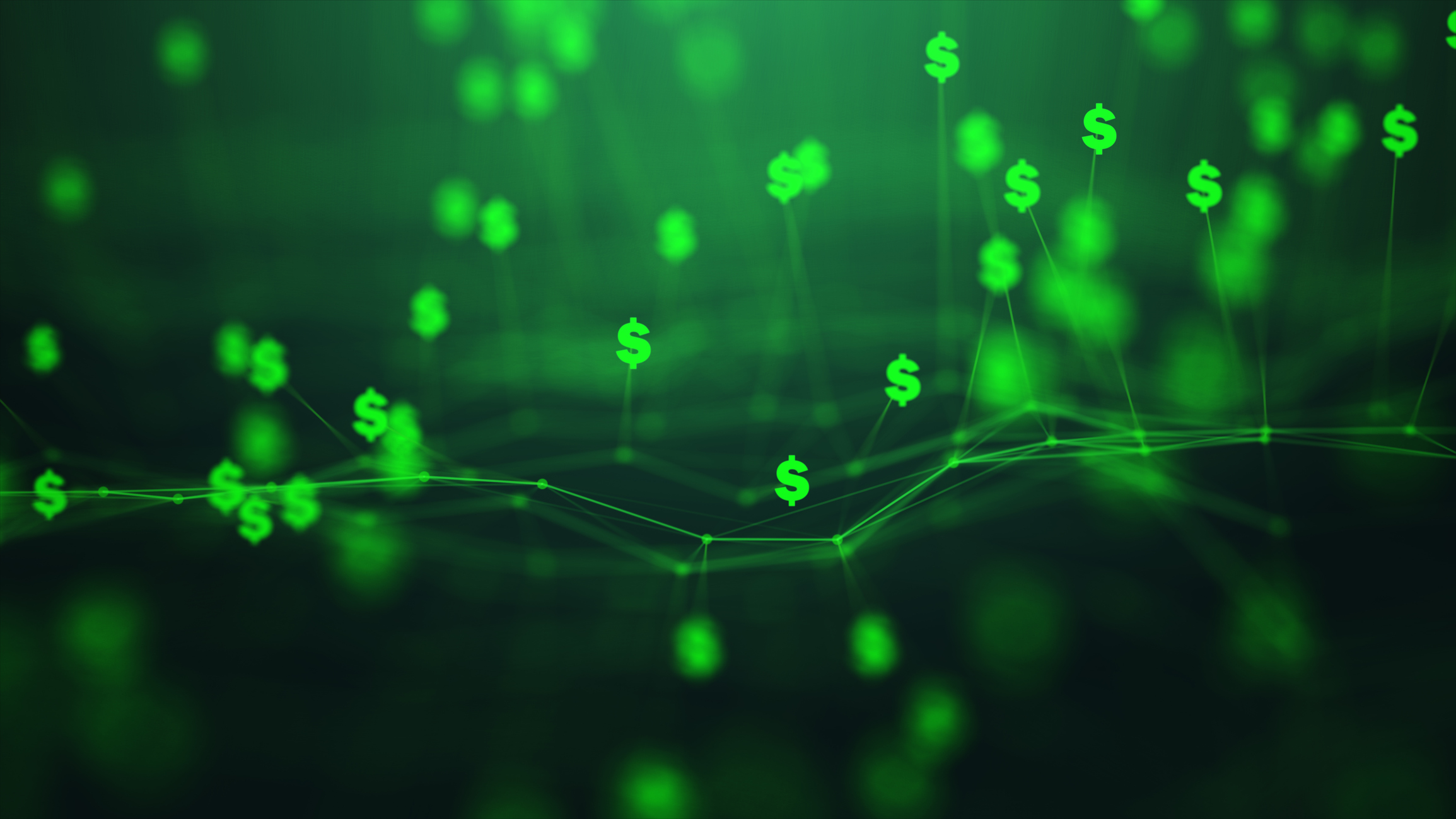S&P 500 Sees New Highs on Shutdown Day: Stock Market Today
Most of its components were in the red, but the S&P 500 Index still managed to hit a new intraday all-time high.


Congress failed to pass funding legislation for the current fiscal year, causing the federal government to shut down. Stocks opened lower as a result, but all three main U.S. equity indexes turned positive before midday and trended higher through the afternoon.
Sector leaders included an odd mix of technology and consumer discretionary stocks, plus utilities and health care stocks, while a leading athleisure name appears to be on a solid recovery run.
"As expected," writes Louis Navellier of Navellier & Associates, "the government shutdown started at midnight. The market appears unconcerned."
From just $107.88 $24.99 for Kiplinger Personal Finance
Become a smarter, better informed investor. Subscribe from just $107.88 $24.99, plus get up to 4 Special Issues

Sign up for Kiplinger’s Free Newsletters
Profit and prosper with the best of expert advice on investing, taxes, retirement, personal finance and more - straight to your e-mail.
Profit and prosper with the best of expert advice - straight to your e-mail.
As Navellier recounts, "The history of shutdowns is not scary." Indeed, they last a little more than a week, on average, and 86% of the time, stocks are higher a year later, with an average gain of 13%.
Any macro downside, Navellier explains, "is likely to push the Fed off the fence for a series of rate cuts. It will also do little to change the AI narrative, the key driver of new market highs."
Nvidia (NVDA, +0.4%) also hit a new record high on an intraday basis, as semiconductor stocks posted solid gains. "The hopeful dip buyers are going to have to wait," Navellier concludes. "Momentum remains positive."
The U.S. Dollar Index (DXY) was modestly lower at 97.71 vs 97.78 on Tuesday. Gold continued to extend its own uncertainty-supported rise to record highs, adding 0.6% to $3,897 per ounce.
At Wednesday's closing bell, the broad-based S&P 500 was up 0.3% at 6,711, the tech-heavy Nasdaq Composite had added 0.4% to 22,755 and the blue chip Dow Jones Industrial Average was higher by 0.1% at 46,441.
The employment data situation
As of Wednesday's closing bell, the release of the next jobs report from the Bureau of Labor Statistics and other sets of incoming economic data are on hold until the government shutdown ends.
We do have incoming data from private sources to evaluate, including this morning's ADP National Employment Report. According to ADP, private U.S. payrolls shed 32,000 jobs in September.
Wall Street expected employers to have added 50,000 jobs last month. ADP also said employers shed 3,000 jobs in August vs an initial count of 54,000 new jobs added.
ADP's annual recalibration in September – based on the full-year 2024 results of the Quarterly Census of Employment and Wages – resulted in a reduction of 43,000 jobs in September compared to pre-benchmarked data.
"The trend was unchanged," ADP added. "Job creation continued to lose momentum across most sectors."
Nike just grew it
Nike (NKE, +6.5%) was on the podium for Dow Jones stocks today after the footwear and performance apparel outfit said fiscal 2026 first-quarter sales grew by 1% year over year to $11.7 billion.
Analysts expected revenue to decline by 5% to $11 billion. Earnings of 49 cents per share were down 30% but beat a consensus forecast for a 63% drop to 26 cents.
"While we're getting wins under our belt," said Nike CEO Elliott Hill, citing progress in its Win Now initiative and its "priority areas" of North America, Wholesale and Running, "we still have work ahead to get all sports, geographies, and channels on a similar path as we manage a dynamic operating environment."
Stifel analyst Peter McGoldrick reaffirmed his Hold rating on NKE stock but raised his price target from $64 to $68, citing recent upside vs estimates as well as a return to revenue growth as "strong signs of validation of the turnaround."
McGoldrick notes management's outlook "contemplates a 'non-linear' pathway forward," but the analyst sees "steady building into FY27, helped by World Cup 2026."
It's still the "most important athletic brand," according to McGoldrick, who acknowledges a cautious view but still sees an eventual "return to healthy growth" for Nike.
Amgen (AMGN, +5.8%) and Merck (MRK, +7.4%) joined Nike atop the Dow after beleaguered Pfizer (PFE, +6.9%), now partially owned by the federal government, reached a deal with the White House on drug pricing that will benefit pharmaceutical makers generally.
PFE stock rose further on late-day reports of another deal, this one to add Advanced Micro Devices (AMD, +1.4%) as a customer.
AES gets more expensive
AES (AES, +16.7%) surged as much as 17.9% – and may no longer fit on lists of the best value stocks to buy – after the Financial Times reported the renewable electric power producer is about to be acquired by BlackRock (BLK, -2.2%) unit General Infrastructure Partners for $38 billion.
Neither AES nor GIP commented on the FT story about advanced talks that could still fall short of a deal.
AES has signed power purchase agreements to provide clean energy for hyperscalers building the infrastructure to support the AI revolution, including Google parent Alphabet (GOOGL, +0.7%), Facebook and Instagram parent Meta Platforms (META, -2.3%) and Microsoft (MSFT, +0.3%).
Related content
- What Does a Government Shutdown Mean for Stocks?
- Best AI Stocks to Buy: Smart Artificial Intelligence Investments
- The Best Lithium Stocks to Buy Now
Profit and prosper with the best of Kiplinger's advice on investing, taxes, retirement, personal finance and much more. Delivered daily. Enter your email in the box and click Sign Me Up.

David Dittman is the former managing editor and chief investment strategist of Utility Forecaster, which was named one of "10 investment newsletters to read besides Buffett's" in 2015. A graduate of the University of California, San Diego, and the Villanova University School of Law, and a former stockbroker, David has been working in financial media for more than 20 years.
-
 It's Beginning to Look a Lot Like a Santa Rally: Stock Market Today
It's Beginning to Look a Lot Like a Santa Rally: Stock Market TodayInvestors, traders and speculators are beginning to like the looks of a potential year-end rally.
-
 The 2026 Retirement Catch-Up Curveball: What High Earners Over 50 Need to Know Now
The 2026 Retirement Catch-Up Curveball: What High Earners Over 50 Need to Know NowUnlock the secrets of the 2026 retirement catch-up provisions: A must-read for high earners aged 50 and above.
-
 How Much a $100K Jumbo CD Earns You
How Much a $100K Jumbo CD Earns YouYou might be surprised at how fast a jumbo CD helps you reach your goals.
-
 Stocks Rise to the Spirit of the Season: Stock Market Today
Stocks Rise to the Spirit of the Season: Stock Market TodayInvestors, traders and speculators are beginning to like the looks of a potential year-end rally.
-
 A Financial Planner Takes a Deep Dive Into How Charitable Trusts Benefit You and Your Favorite Charities
A Financial Planner Takes a Deep Dive Into How Charitable Trusts Benefit You and Your Favorite CharitiesThese dual-purpose tools let affluent families combine philanthropic goals with advanced tax planning to generate income, reduce estate taxes and preserve wealth.
-
 A 5-Step Plan for Parents of Children With Special Needs, From a Financial Planner
A 5-Step Plan for Parents of Children With Special Needs, From a Financial PlannerGuidance to help ensure your child's needs are supported now and in the future – while protecting your own financial well-being.
-
 How Financial Advisers Can Best Help Widowed and Divorced Women
How Financial Advisers Can Best Help Widowed and Divorced WomenApproaching conversations with empathy and compassion is key to helping them find clarity and confidence and take control of their financial futures.
-
 A Wealth Adviser Explains: 4 Times I'd Give the Green Light for a Roth Conversion (and 4 Times I'd Say It's a No-Go)
A Wealth Adviser Explains: 4 Times I'd Give the Green Light for a Roth Conversion (and 4 Times I'd Say It's a No-Go)Roth conversions should never be done on a whim — they're a product of careful timing and long-term tax considerations. So how can you tell whether to go ahead?
-
 A 4-Step Anxiety-Reducing Retirement Road Map, From a Financial Adviser
A 4-Step Anxiety-Reducing Retirement Road Map, From a Financial AdviserThis helpful process covers everything from assessing your current finances and risks to implementing and managing your personalized retirement income plan.
-
 The $183,000 RMD Shock: Why Roth Conversions in Your 70s Can Be Risky
The $183,000 RMD Shock: Why Roth Conversions in Your 70s Can Be RiskyConverting retirement funds to a Roth is a smart strategy for many, but the older you are, the less time you have to recover the tax bite from the conversion.
-
 A Financial Pro Breaks Retirement Planning Into 5 Manageable Pieces
A Financial Pro Breaks Retirement Planning Into 5 Manageable PiecesThis retirement plan focuses on five key areas — income generation, tax management, asset withdrawals, planning for big expenses and health care, and legacy.